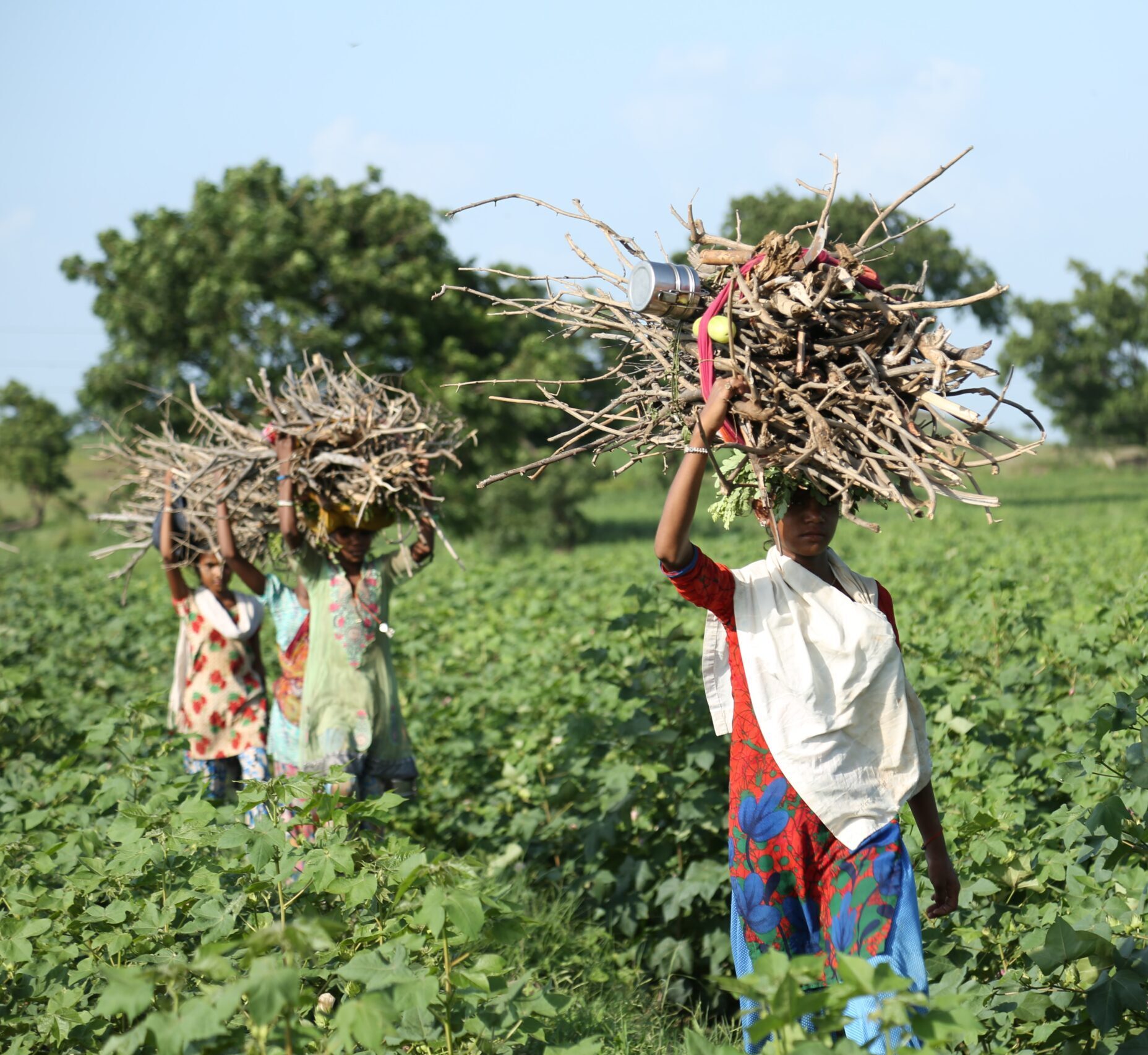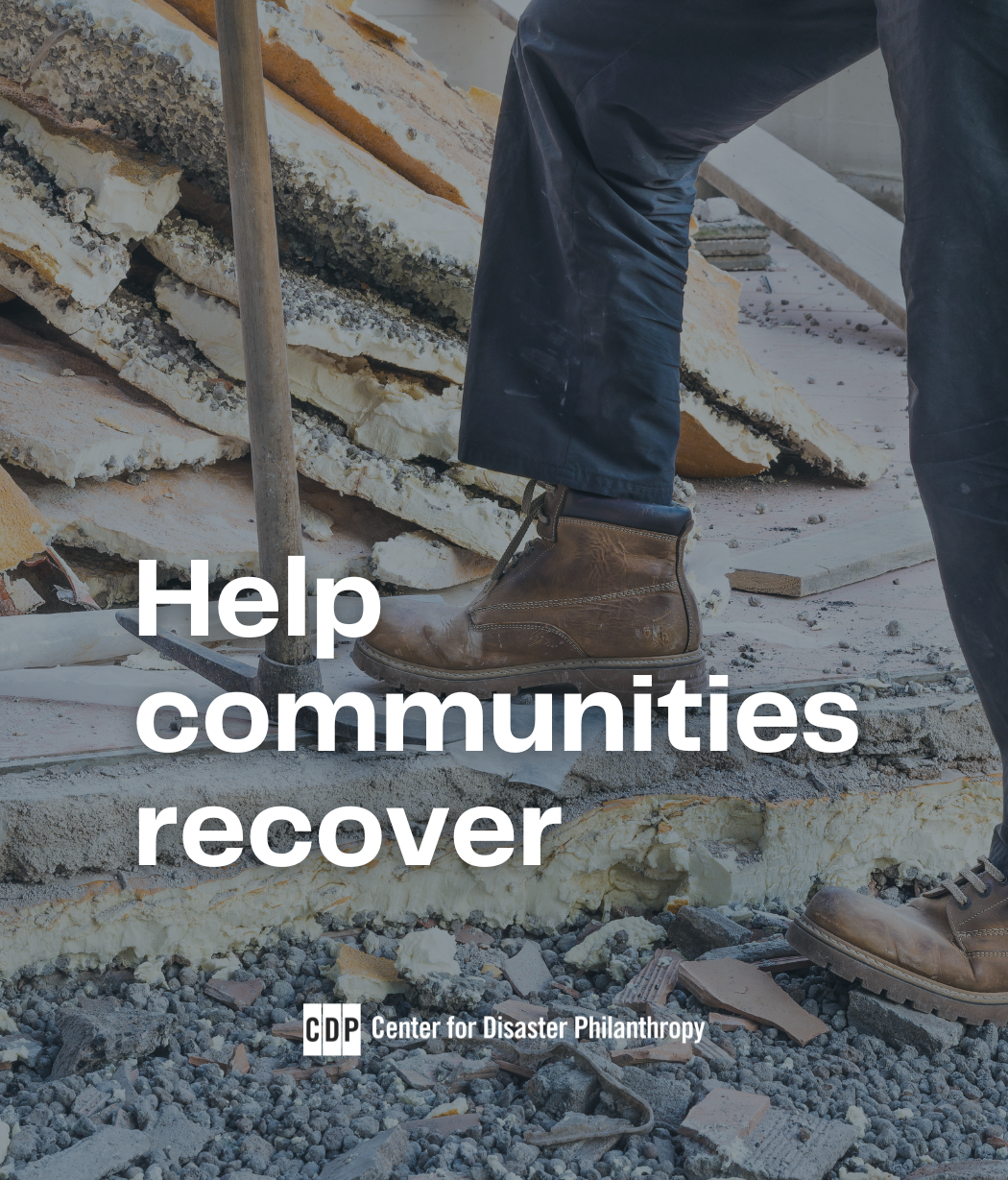What we’re watching: Weekly disaster update, July 3

We know all too well that disaster can strike anytime, anywhere in the world. Some disasters make headlines; others do not. Here at the Center for Disaster Philanthropy (CDP), we monitor the status of disasters worldwide and compile a list of the ones we’re tracking weekly, along with relevant disaster-related media coverage.
Here’s what we’re watching for the week of July 3, 2023.
New or Emerging Disasters
Arizona – Wildfire: The Diamond Fire started on June 27 in North Scottsdale, approximately 11 miles southwest of the community of Rio Verde. As of June 30, the fire had burned 1,960 acres and 60% of the perimeter was contained, according to InciWeb. The fire threatened around 100 homes and forced the evacuation of more than 1,100 people.
For more, see our 2023 North American Wildfires disaster profile.
U.S. Midwest – Derecho: A derecho is a line of intense, long-lived and widespread thunderstorms that move quickly across a long distance. On June 29, a line of severe thunderstorms tore across the region from southeast Nebraska and northeast Kansas into Indiana with winds that gusted up to 90 miles per hour. The storm caused damage to homes, cars and crops and left hundreds of thousands without power.
Maine – Flooding: Heavy rain throughout Franklin County, in Maine, led to flooded roads, some that washed away. Over five inches of rain fell on June 29, leading to four feet of flooding in some areas. The town of Jay was worst hit, with less than 12 roads navigable on Friday afternoon (June 30). It is expected that Route 133 will be closed for several weeks. Overall, June was an extremely wet month for the state.
Quebec – Landslide/Flooding: Heavy rain also led to a landslide in Rivière-Éternité, a small community about 161 miles northeast of Quebec City, after a landslide July 1. Two people were missing, and two hundred evacuated, including over one hundred from a nearby campground.
Previous/Ongoing Disasters
India and Pakistan – Cyclone: The Indian Meteorological Department said Cyclone Biparjoy set a record for the longest lifespan over the Arabian Sea, more than 10 days. The cyclone made landfall on June 16 and had wind speeds of 53 miles per hour through the coastal regions of western Gujarat. Two deaths were reported in Gujarat. Save the Children said that more than 58,000 people, including at least 18,000 children, were affected by floods and power outages in Rajasthan.
The storm then moved to Pakistan, where 1.2 million people were exposed to high winds speeds between June 16-17. The high winds and heavy rains by Cyclone Biparjoy led to 4 deaths and damage to 2,460 houses in the country. On June 21, the UN Office for the Coordination of Humanitarian Affairs said camps for evacuees had been closed, and 84,610 people were returning to their villages.
Canada – Wildfires: With hundreds of wildfires burning from coast to coast, Canada is experiencing its most destructive wildfire season on record. The acreage burned in 2023 has surpassed the amount of land burned in 1989, which previously held Canada’s annual record. Canadian officials have declared a “national preparedness level 5” in response to the wildfires, “indicating full commitment of national resources is ongoing, demand for resources is extreme, and international resources are being mobilized.”
As of June 29, the Canadian Interagency Forest Fire Centre recorded 499 active fires, with 230 deemed “out of control.” More than 20 million acres (8.1 million hectares) have been burned across the country in 2023. At least 20 U.S. states were under air quality alerts on the morning of June 30. The thickest smoke on June 30 stretched from the eastern Great Lakes to the Interstate 95 corridor and parts of the Southeast.
For more, see our 2023 North American Wildfires disaster profile.
Texas – Heat Wave: A weeks-long heat wave characterized by triple-digit temperatures and high humidity has resulted in at least 13 deaths in Texas. Ten deaths due to heat illness were reported in Webb County. Since the heat wave began, at least nine inmates have died of heart attacks or unknown causes in prisons lacking air conditioning. The prison system has not officially counted a heat-caused death since 2012.
According to the Centers for Disease Control and Prevention, the region saw 854 emergency room visits between June 18 and 24. The figure is a significant increase from the 639 emergency room visits during the same period in 2022. A stagnant “dome of high pressure” has fueled the dangerous heat and humidity across most of Texas, with people told to take precautions and limit time outdoors. A law signed by Governor Greg Abbott last week takes aim at local regulations, including eliminating local rules mandating water breaks for construction workers. The heat wave is putting strain on the state’s power grid.
Mexico – Heat Wave: The same dome of high pressure affecting the southern U.S. is producing deadly results in Mexico. Mexican health authorities say there have been at least 112 heat-related deaths in 2023. So far this year, the heat-related deaths are almost triple the figures in 2022.
According to Rafael Trejo Vázquez, deputy manager of forecasting at Mexico’s national meteorological service, a 22-day span of abnormally hot weather that stopped last week was the first heat wave since 2017 to have lasted so long. Hermosillo in northwestern Mexico saw temperatures of 121 degrees Fahrenheit on June 25, among the highest temperatures recorded in the world on that day. A surge in demand for electricity has resulted in some power outages and disrupted water supplies.
In addition to the disasters listed above, we actively monitor the following disasters or humanitarian emergencies. For more information, see the relevant disaster profiles, which are updated regularly.
- Afghanistan Humanitarian Crisis
- Cyclone Mocha
- Horn of Africa Hunger Crisis
- 2023 US Tornadoes
- 2023 Turkey-Syria Earthquake
- Sudan Humanitarian Crisis
- Ukraine Humanitarian Crisis
U.S. Midwest Low-Attention Disasters
The Midwest is regularly faced with low-attention disasters that affect people across the region. CDP’s Midwest Early Recovery Fund (ERF) effectively funds efforts that catalyze equitable disaster recovery.
These are some of the latest disasters and related news the ERF team is monitoring:
- Severe storms in parts of North Dakota damaged power lines and a manufactured home near Selfridge. One person was hospitalized for minor injuries. The Dakotas are also enduring heavy rainfall and some subsequent flooding. Spearfish, South Dakota, has experienced flooding of cars and homes.
- Arkansas Governor Sarah Huckabee Sanders declared a state of emergency on June 26 in response to the severe storms over the previous weekend. The declaration came on the heels of executive orders related to the deadly March 31 tornadoes and other storms that hit the state in June.
- In Montana, Governor Greg Gianforte submitted a request for a presidential major disaster declaration due to flooding in April. The request includes counties of Blaine, Daniels, Hill, Park, Roosevelt, Sheridan and Valley, along with the Fort Peck Tribes.
Complex Humanitarian Emergencies – Somalia
Many places worldwide are experiencing emergencies caused by conflict, climate change, drought, famine, economic challenges and other conditions that combine to create a complex humanitarian emergency (CHE). CDP maintains complete profiles on several CHEs, and what CDP considers Level 1 CHEs are profiled in this weekly blog post and tracked.
In 2023, Somalia’s humanitarian situation continues to deteriorate. Severe drought, hunger, disease and violence bring Somalia to the brink of famine. A famine classification is the highest on the Integrated Food Security Phase Classification (IPC) scale (Phase 5) and is attributed to “when an area has at least 20% of households facing an extreme lack of food, at least 30% of children suffering from acute malnutrition, and two people for every 10,000 dying each day due to outright starvation or to the interaction of malnutrition and disease.”
According to the Famine Early Warning Systems Network, “Crisis (IPC Phase 3) and Emergency (IPC Phase 4) outcomes remain widespread across Somalia, with some households in Catastrophe (IPC Phase 5). Severe outcomes are expected to persist through September, and humanitarian assistance remains vital to preventing even worse outcomes in many areas.” Acting before reaching Phase 4 or above is critical to save lives. It is more difficult to recover and regain productive assets when famine is reached. A two-track approach helps address immediate needs and long-term impact by strengthening resilience.
Since October 2021, Somalia has been experiencing a devastating drought after five consecutive seasons with below-average rainfall. The drought has left at least 3.5 million livestock dead and 1.4 million people displaced. Climate change is a persistent challenge for Somalia as well as conflict, such as in northern Somalia, as reported by The New Humanitarian. As of June 29, donors had funded only 30.5% of the $2.6 billion requested in Somalia’s 2023 Humanitarian Response Plan.
Upcoming webinars

July 13: The gendered nature of climate change

Aug. 10: Disaster case management: Navigating recovery one person at a time
What We’re Reading
- A Call to Action to Fund LGBTQ+ Issues, Movements, and Organizations – PEAK Grantmaking: Kelsey Andersen from the Arcus Foundation shares thoughts and learnings from recent conferences and discussions with activists domestically and abroad. Andersen challenges philanthropy to consider how we can better commit to supporting LGBTQ+ communities.
- Artificial intelligence is coming for philanthropy – Alliance: Rhodri Davies, founder of Why Philanthropy Matters, argues that funders and civil society organizations need to play a more active role “by demonstrating how AI can be used in ways that benefit society; by highlighting the unintended consequences of implementing it carelessly; and by ensuring that they have a voice in debates about how to shape the technology so that it brings benefits, rather than harms, to our society.”
- Wealthier Should Give to Charity, Say People Who Stopped Donating, New Poll Finds – The Chronicle of Philanthropy: A survey of more than 2,100 adults across the U.S., released last week by the Better Business Bureau’s Give.org “found that nearly half of those who stopped giving to charity over the past five years said they did so because they thought wealthier people could afford to give more — and should. Others said they simply could not afford to give.”
- Texas’s nighttime temperatures are a symptom of a new, more dangerous kind of heat wave – CNN: A heat wave across Texas and the South has produced triple-digit temperatures and extreme humidity impacting millions. Forecasters are warning one dangerous aspect of the heat wave is that overnight temperatures are not cooling down enough.
- A historic rise in global conflict deaths suggests a violent new era – The Washington Post: Counting the dead in any conflict is an imprecise task, but the trend line of data in the Global Peace Index, which Sydney-based Institute for Economics and Peace has been producing since 2009, is worrying. In 2022, Russia’s invasion of Ukraine and the conflict in Ethiopia between the national government and regional forces in Tigray represented most of that year’s conflict deaths, according to the Global Peace Index.
- Hunger kills hundreds after US and UN pause food aid to Ethiopia’s Tigray region, officials say – The Associated Press: Tigray’s Disaster Risk Management Commission has recorded 728 hunger-related deaths in three of the region’s seven zones since the United Nations and the U.S. suspended food aid in March after learning of a scheme to steal donated wheat intended for people in need.
- Rebuilding Lac-Mégantic: Decade after rail disaster, residents say downtown still a desert – CBC: On July 6, 2013, a runaway train carrying 72 tank cars of crude oil, jumped the tracks and crashed into the town, leading to a massive fire, and 47 deaths. Ten years later, the town is a shell of what it was.
- Where has the Humanitarian Sector got to on Localization? Great new update – From Poverty to Power: Duncan Green shares highlights from an ALNAP paper on localization. The paper states, “The humanitarian sector is still unclear, and has yet to develop consistent analysis and understanding about the intended outcomes and the ultimate impacts of localisation.”
Burmese peacock softshell turtles, just hatched from their eggs, were captured on video. The turtles are critically endangered and found only in Myanmar. The Indawgyi Lake turtle guardians protected the eggs, an example of collaboration with residents around conservation.

